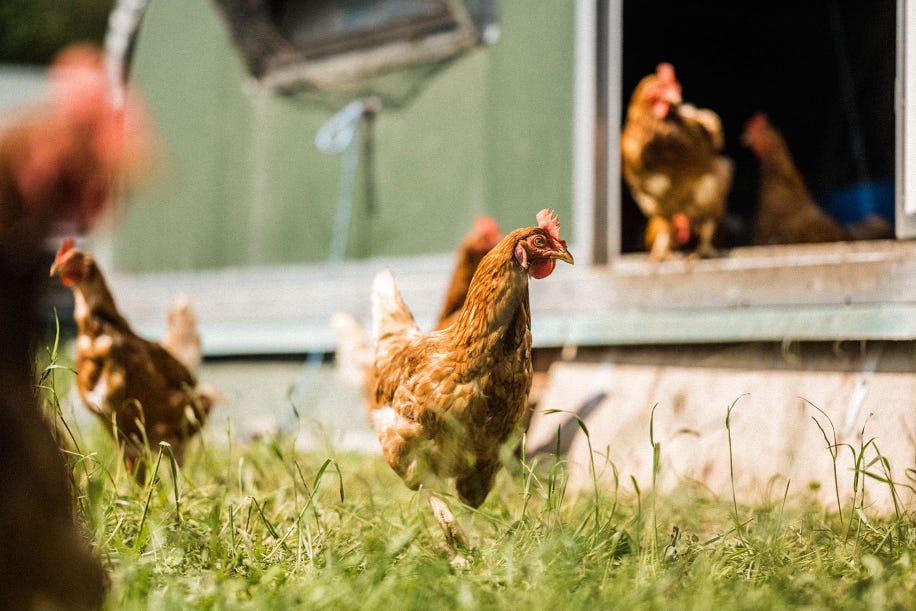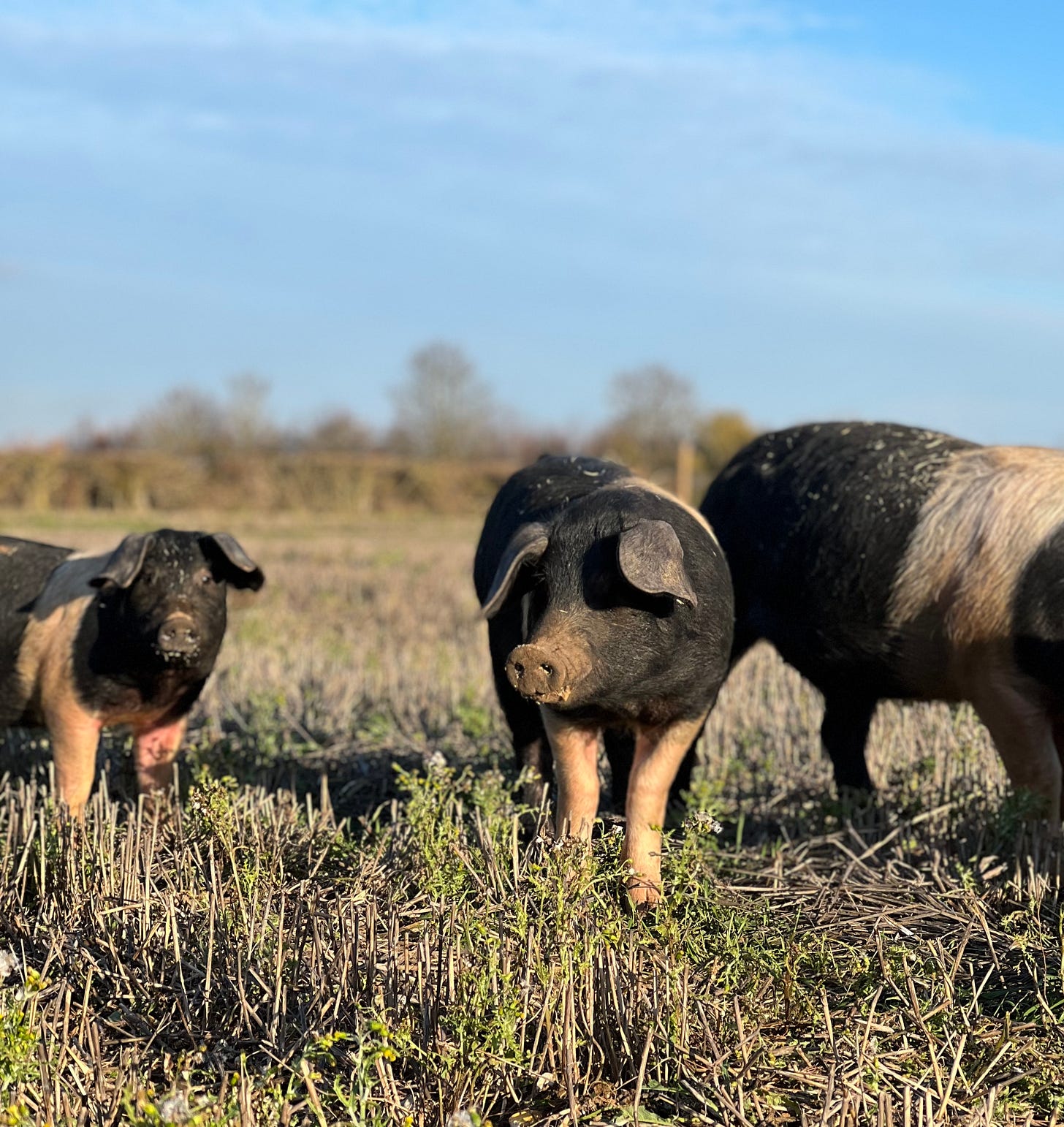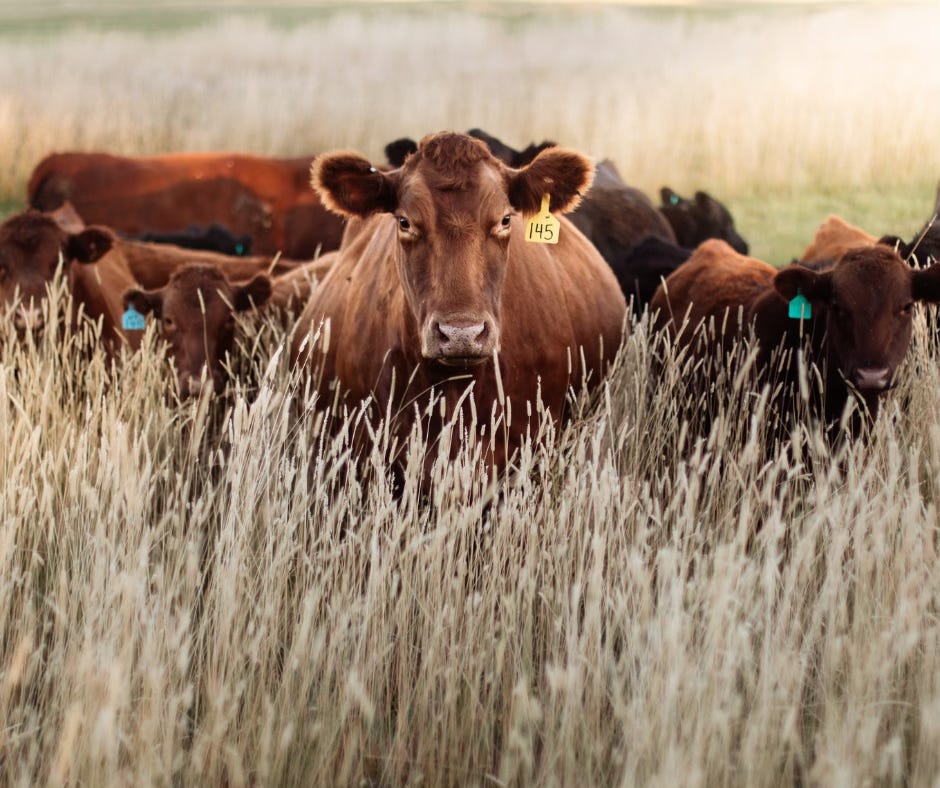The Future of Livestock Farming: It’s Not the Cow, It’s the How
What if livestock weren’t the problem—but part of the solution?
This post is part of my “Future of Farming” series, where I dig into the future of agriculture, food security, and policy. If you’re new here, catch up on the rest of the series:
The Future of Livestock Farming
Feel free to explore each one for a deeper look at where farming is headed!
Livestock farming is often cast as the climate crisis villain. But as the Sustainable Food Trust’s new report, Grazing Livestock: It’s Not the Cow, It’s the How, argues—and as I’ve seen firsthand on my own farm—the real issue isn’t whether we raise animals, but how we do it.
As Patrick Holden, CEO of the Sustainable Food Trust, puts it:
“This report clearly demonstrates the need to differentiate between livestock that are part of the problem and those that are an essential part of the solution. In other words, it’s not the cow, it’s the how.”
Anticipating the SFT Report: Reflections from the Oxford Real Farming Conference
I was eagerly awaiting the release of the SFT report after attending a fascinating session at the Oxford Real Farming Conference called “Grazing for Good: Livestock and Diversity in the UK.” Patrick Holden, CEO of the SFT, led a thought-provoking panel that explored how grazing animals can help restore nature and support biodiversity recovery. One key takeaway: livestock have been unfairly scapegoated for methane emissions, when it’s industrial farming systems that are largely responsible for the problem.
During the panel, I was introduced to Molly Riddel, a Farmers Weekly writer, and learned more about the Knepp Estate—a project that’s really changed my thinking about rewilding and livestock. Knepp isn’t just about letting nature take over; it’s about integrating grazing animals to regenerate land while still producing food. Their meat boxes and farm shop sales prove that we don’t have to remove land from food production to support biodiversity—we can do both, and do them well.
Read more about Knepp Estate
Real-World Examples of Regenerative Livestock Farming
Closer to home, I’ve been following the Kingsclere Estate—a 2500-acre arable farm that’s successfully integrated livestock to enhance biodiversity. Their innovative roaming dairy system allows cattle to graze and be milked in the fields, rotating across the land to improve soil health and ecosystem diversity. They’ve even added laying hens to follow the cattle rotation, further enriching the land. I’ve always admired how Tim May has built this system, and their “Pitch Up” project is a fantastic opportunity for new entrants into farming—offering support, knowledge, funding, and even grazing space
Learn about Kingsclere Estate
Check out Pitch Up
These examples show that the transition to agroecological farming isn’t just an idealistic vision—it’s already happening. Yes, the SFT report is ambitious, and critics like George Monbiot have called it out for being too idealistic; New reports tell us cattle and sheep farming can be sustainable – don’t believe them, it’s all bull. But from what I’ve seen, more farms could make the shift from commercial, industrial models to regenerative, agroecology systems—if government subsidies supported these changes rather than prioritising Big Ag and AI tech.
My Perspective on Pigs, Poultry, and the SFT Report
My only real bone to pick with the SFT report is its stance on pigs and poultry. In the report the SFT suggests intensive pig and poultry farms should be reduced by 50%. While I understand the concern about the grains they consume, I think the report misses a crucial point and we should aim to transition intensive farms to more suitable systems. In my experience, pigs in an arable rotation can be extremely beneficial:
They reduce the need for chemical fertilisers by spreading manure rich in nutrients.
They help increase crop yields by clearing out previous crops and consuming cereals grown in the fields they graze.
It’s a closed-loop system if managed well, supporting both soil health and food production.
Pigs are also vital for regenerating woodland and wetland habitats. The Knepp Estate used Tamworth pigs in their regeneration project, and I’m a big fan of the agroforestry approach at The Woolly Pig Co, where Mangalitsa pigs are reared in Brodoclea woodland in Scotland. Their system is a brilliant example of how pigs can thrive in harmony with nature, supporting woodland regeneration and producing high-welfare meat.
See The Woolly Pig Co’s story
Big Picture: Agroecology, Food Sovereignty, and the Path Forward
The Landworkers’ Alliance vision for agroecology and food sovereignty aligns with what I’ve seen and believe:
We need to shift from industrial, extractive models to land-sharing, mixed farming, and agroforestry.
Local food systems and shorter supply chains make us more resilient and less dependent on imports.
Dietary change is part of the solution, but the meat we do eat should come from regenerative, local systems—not intensive, imported models.
Transitioning the UK to these systems isn’t easy, but it’s not unachievable. The examples above show it’s possible, and government policies should support—not hinder—this transition.
Conclusion:
The future of livestock farming is about more than numbers or emissions—it’s about systems, cycles, and the people and animals working together to regenerate land and produce real food.
Join a growing community of readers passionate about food security, soil health, and regenerative farming. As a free subscriber, you’ll get regular updates and insights delivered straight to your inbox. If you want to dive deeper, paid subscribers receive exclusive content, practical guides, and the chance to help shape future topics and discussions.
Sources & Further Reading
Sustainable Food Trust – Grazing Livestock: It’s Not the Cow, It’s the How (2024 Report, PDF)
The Guardian – Why cattle and sheep farming can’t be sustainable (Opinion, 2025)
Landworkers’ Alliance – An LWA Vision for Agroecology and Food Sovereignty
Kingsclere Estates – Regenerative Farming & Pitch Up Project









Another great post Helen, thank you. I really enjoy reading your posts (even as someone who is pretty much vegan)I have a question that has been niggling me (especially as a language nerd)... calling animals 'live stock' effectively says that we are still viewing animals as 'stock', or commoditites that we own and use (exploit?) for our benefit, rather than sentient beings who we can partner with to help restore the soil. I think a shift in mindset, and language, is crucial to helping people shift to regenerative practices, and understand that caring for animals is also caring for the land, and for us. And that's hard to do when you (a general you, not you specifically) still see the animals as stock. I'd love to know your view on it.
It not the animals its the soil. And more often than not, animals will help restore and retain the soil…. Oh my, I wish I could let all the expletives out.
Keep at it Helen, your posts are great.